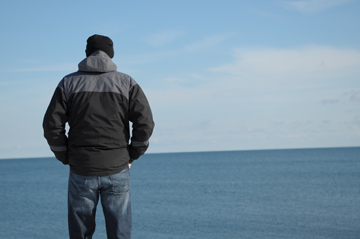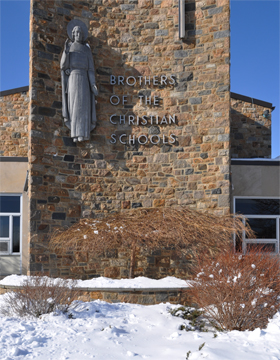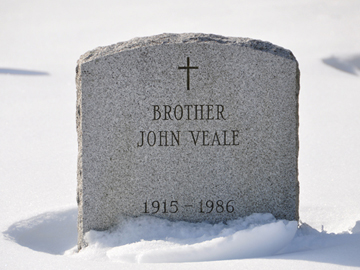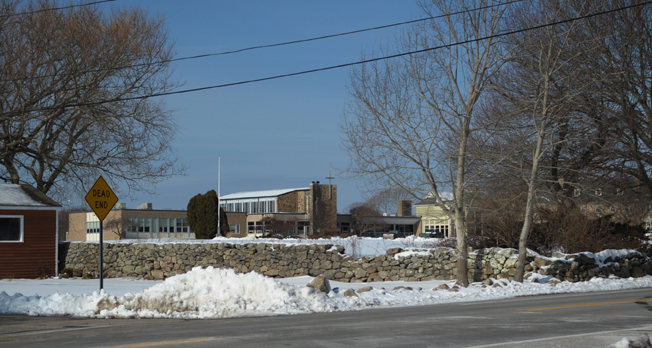Oliver and I went down to Narragansett. He was interested to see if it was somewhere he and Luz could spend a weekend. I was interested in seeing the Novitiate, the rocks and the beach.

We began at the northern end, at the surfers’ beach, and then drove south on Ocean Road to the Novitiate. I got to tell about my life in the monastery and Oliver was amazed by the story. (I guess thirty-something Jewish Californians don’t know about Medieval European monasticism.) It was also fun being on the Novitiate grounds with someone who was neutral to the idea of my having lived there as a monk.
The next stop was Black Point. This is a small state park, an ocean-access area, across the road from the Novitiate. The strip of land is wooded and has a path down to what we called the rocks. This is an ocean-front of rock and shallow pools. We would walk down to the rocks at least once a week. I remember seeing star-fish in the shallow pools. I took one back to my room, thinking that it would dry and I’d have a souvenir. The smell of rotting flesh was enough to convince me to never try that experiment again.
In January of 1969 a group of novices rescued three fishermen that had run aground on the rocks. We formed a human chain and pulled the men out of the freezing ocean. We made all the local papers. The headline read – Brothers to All.
..

There is a famous picture of me in profile and with hair, sitting on the rocks and wistfully looking out to sea. It was my last summer at Narragansett. Bill Green took the picture without my knowing. (He gave it to me when we were leaving the Novitiate.) Bill’s photograph is soft, pretty and romantic.
I’ve always wanted to take a similar picture and I got the opportunity with Oliver as the subject. The above-left picture is my version of the 1969 photograph. Gone is the summer, gone is the longing, gone is the innocence.
Welcome to blue and black, welcome to geometry.


